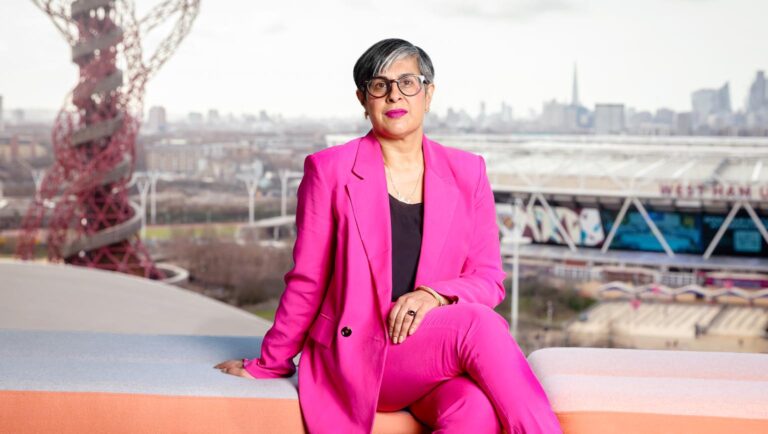
Shazia Hussain on delivering Phase 3 for the Queen Elizabeth Olympic Park
The CEO of London Legacy Development Corporation is The Wick’s latest guest editor
The Victoria and Albert Museum, known to its friends as the V&A, is executing a twin-track expansion from its ancestral South Kensington home into the Queen Elizabeth Olympic Park.
The most visible evidence of this is the V&A East Museum, that exotic construction at one end of the four-piece arts and culture terrace on the bank of the Waterworks River near Westfield that forms part of the East Bank complex.
But the more imminent is the V&A East Storehouse, a structure built into the Here East tech innovation and media complex adjacent to the Lee Canal at Hackney Wick.
The Storehouse is the realisation of a novel notion initially inspired by necessity. In 2015, the government announced that it would be selling Blythe House, a listed former Post Office Savings Bank building in West Kensington where the reserve collections of the V&A, the Natural History Museum and the Science Museum were kept.
The creation of the V&A East Museum was a done deal by then. The solution to the reserve collection problem presented itself close by. But it will be something more than a warehouse facility entombing 250,000 precious objects visible only to archivists and academics.
Instead, it will be accessible to all, with many of its wonders on display. The V&A promises what they are calling “a new kind of museum experience”, providing “a chance to see behind the scenes of a working museum” and opportunities to arrange viewings of particular items, assisted by Storehouse staff.
Journalists and other interested parties were given a preview of the place back in the autumn and ushered up to a wide metal platform surrounded by storage structures and gantries graced by bits of distinguished furniture.
A glass section of the floor offers a view of the 17th Century Agra Colonnade, a luxurious former bathhouse frontage fashioned from marble. Visitors will also be able to see a 1930s Kaufmann Office, a classic work by US designer by Frank Lloyd Wright and the only one not in the USA. There will be a handsome Frankfurt Kitchen of the type installed in that city in the 1920s.
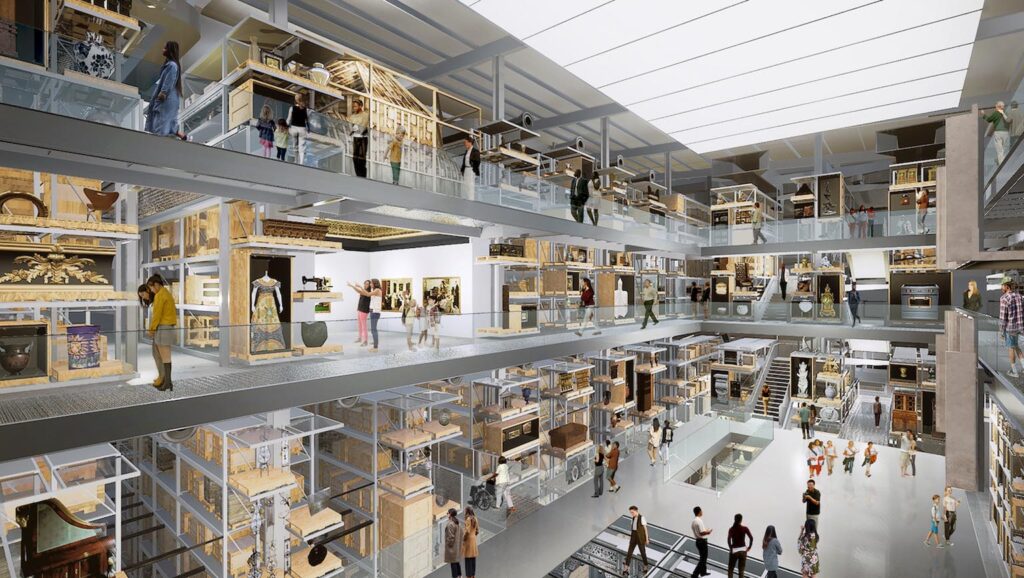
From closer to home, a three-storey portion of Poplar’s Robin Hood Gardens housing estate, completed in 1972 and condemned to demolition 50 years later, will be on show, facilitating the continuing expression of competing opinions about the late-Brutalist pile.
Later in the year, a section of the 16,000 square metre Storehouse will become the David Bowie Centre, showcasing a huge collection of the late rock star’s archive – everything from stage outfits to hand-written lyrics. It will be unveiled on 13th September.
Designed by New York-based architects Diller Scofidio and Renfro, the Storehouse will be open to the public seven days a week. Its ‘order an object’ service will enable anyone to book a close-up look at treasures filed away in cabinets or drawers after selecting them from a catalogue online.
Here East, previously called iCity, is composed of the two large structures, designed by architects Allies and Morrison, that formed the media and broadcast centre for the 2012 Olympic and Paralympic Games. The smaller one, closest to the canal, was where the journalists hung out. The larger one was for the broadcasters and all their kit. This is where the V&A East Storehouse can be found, at the southern end of it.
The media centre was originally expected to be paid for with private money, but the global financial crisis put a stop to that. The publicly-funded Olympic Delivery Authority drew on contingency funds instead.
Throughout, Hackney Council, whose territory Here East falls into, had seen the two buildings as a future hive of new tech businesses, research and creativity.
Boris Johnson’s 2011 appointee as chairman of the London Legacy Development Corporation (LLDC), Daniel Moylan, had other ideas. He wanted the whole lot levelled and the site used instead for prestige housing of traditional design.
But in the end, it was he who was removed from the scene, replaced by Johnson himself after various members of the LLDC board had made known their displeasure with Moylan’s activities. The post-Games finances of the two buildings became anchored when, in November 2012, BT Sport (now TNT Sports) hired a big chunk of the former broadcast facility’s space.
The company moved out in 2020, but the Storehouse, based in a different part of the same building, should add some fresh prestige, not to mention attracting visitors of all ages from near and far. The Olympic Park continues to evolve.
More info on visiting the Storehouse and to Order and Object here
Dave Hill is the author of Olympic Park: When Britain Built Something Big (2022), which tells the story of how London came to host the 2012 Games and how the Park was built. He is also founder, publisher and editor of the journalism website OnLondon.co.uk.

The CEO of London Legacy Development Corporation is The Wick’s latest guest editor
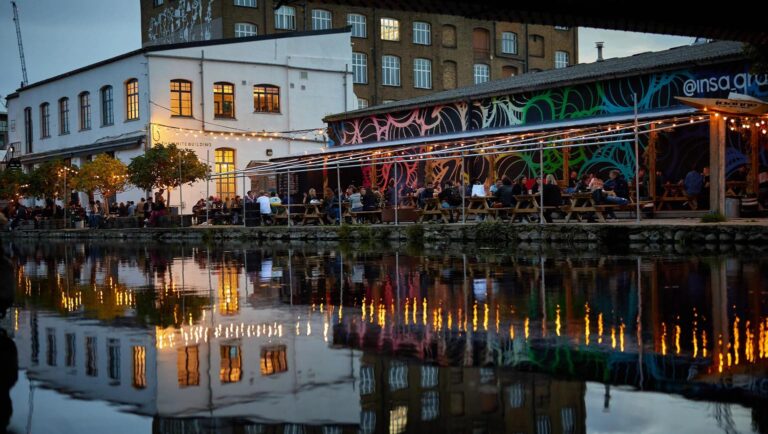
How to make the most of London’s most exciting neighbourhood – without breaking the bank…
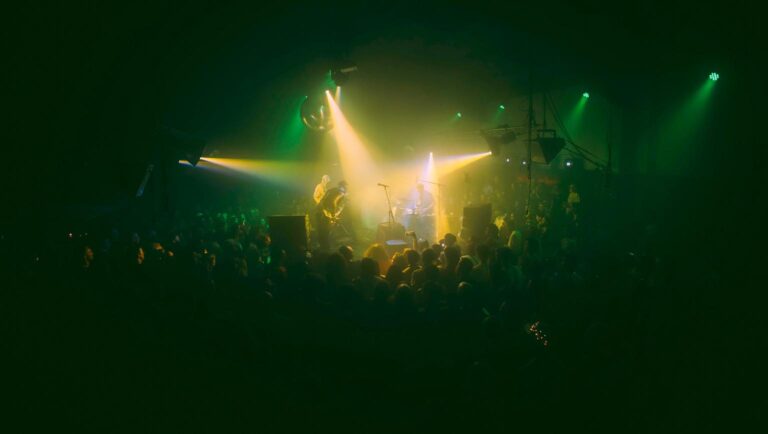
Impressive debut for this all-day celebration of today’s grassroots British jazz
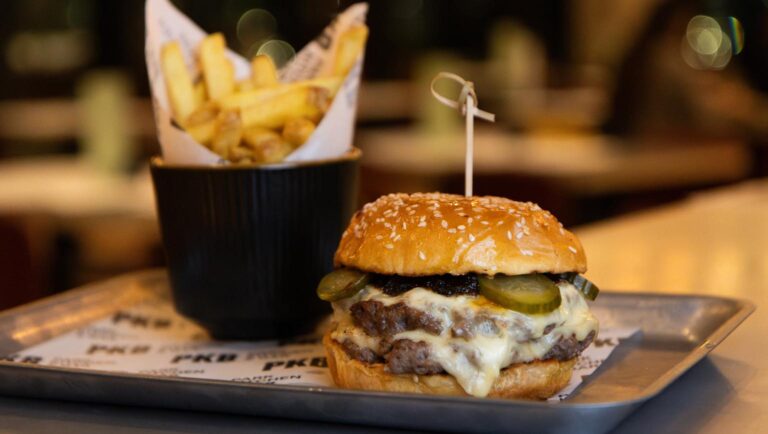
A brilliantly realised menu, drawing upon many local producers, elevates this sunny all-day hangout to an essential dining destination, too
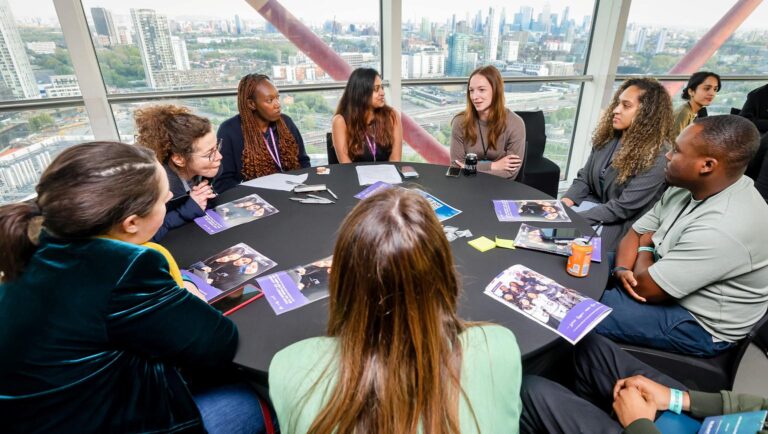
Giving local youth a meaningful voice has been key to the Olympic legacy in East London